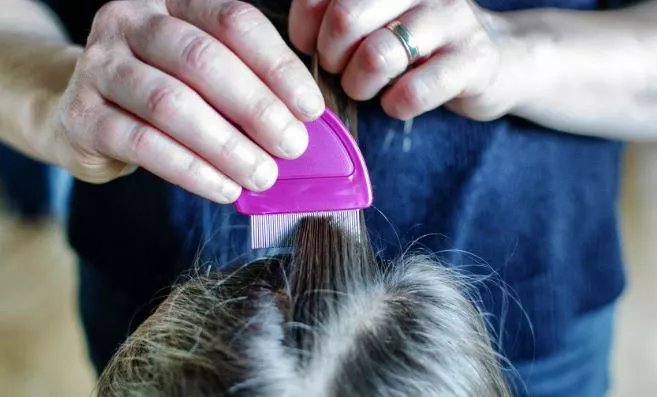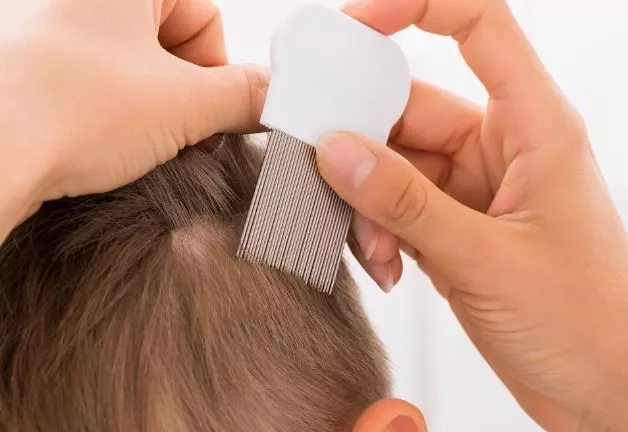What can I Do If My Daughter Keeps Getting Lice?
The best thing you can do when you detect any nits or head lice is to comb them all out. In order to prevent the lice from having time to lay eggs, be thorough and do it more than once a week. The ideal nit comb is a long-toothed metal nit comb. Effective cleansing and checking require more than simply a comb.
What to do if your daughter keeps getting lice? Read on for Remedies, Prevention, and Treatment options. These are simple steps you can take to get rid of lice and prevent them from coming back. Please make sure you clean towels and combs well before using them again. Do not leave lice medicine on the child’s body, such as their face. Rinse their eyes with water afterward.
Treatment options
Your child isn’t the only one who’s prone to head lice. If you have a child, you can learn how to recognize lice early on and take practical steps to prevent a recurrence. You can also prevent lice from multiplying by following proper hygiene practices. Lice cannot survive without human blood for more than 48 hours. Combining natural remedies and topical solutions can prevent lice infestation and its uncomfortable symptoms.

Despite the risks associated with topical treatments, some home remedies effectively kill lice and prevent re-infestation. Petroleum jelly, olive oil, mayonnaise, and butter suffocate lice, but these methods are not recommended. Instead, CDC recommends seeing a dermatologist for lice treatment. These professionals can prescribe a more potent treatment that will prevent re-infestation. But, be aware that some treatments are ineffective or may harm your child’s health.
Home remedies for lice removal are effective for some people, but they won’t work for everyone. Metal lice comb is effective, but silicone gel is difficult to find. In any case, apply the conditioner to wet hair. Leave it for 15 minutes, and then cover your child’s head with a shower cap. Head lice are attracted to water, so applying conditioner is effective in killing them.
While most children will recover from lice infestation after several days, you should still treat your child immediately. You should also avoid sharing hats or grooming aids with children infected with head lice. In addition to using the medication, clean your child’s hair thoroughly with a disinfectant or anti-lice gel. If you suspect your daughter has head lice, you should inform your child’s teachers and close friends.
Another topical solution is the use of the drug Spinosad, which comes from soil bacteria. This treatment is effective for both live lice and unhatched eggs and does not require retreatment. It’s also safe for children six months of age and older. It’s essential to repeat the treatment if the lice come back. An excellent way to avoid this is to take care of people who live with someone with lice and sleep in the same bed.
Symptoms
Symptoms of lice in children can be challenging to detect at first, but there are several ways to protect your child from this raccoon-like disease. While head lice are highly contagious, you can prevent it in your home by washing clothing frequently and regularly treating all family members. It’s also best to avoid head-to-head contact between your child and other people, especially if they’ve recently been outside. In addition, you should wash any personal items your child uses, including hats, stuffed animals, and pillows, in hot water and a hot dryer cycle. If you can’t wash the items, you should place them in plastic bags and store them for at least two weeks. You can also soak hairbrushes in hot water to kill lice.
Head lice may cause itching in children. The saliva released by lice causes itching. It can start immediately or take weeks to develop. Bumps or a red rash may also accompany itching. The skin is also affected by lice, and it’s easy to miss the presence of this infection if it’s untreated. Listed below are some of the most common symptoms of lice in children.
Most children do not acquire head lice from their parents. Most of them don’t get them from other children, but they can acquire them from their bedmates and other people in close contact. In addition, head lice can spread when a child shares a hat or comb with another person. This is especially true when two kids sleep in the same room. While the risk of spreading lice is minimal, treating your child after being exposed to an infected child is recommended. The only time the AAP recommends head lice treatment after exposure is bed-sharing.
While you cannot prevent head-to-head contact, you can use over-the-counter and prescription treatments to treat lice in your child. Be sure to check the product label to make sure it’s safe for your child. If you suspect your child has head-to-head contact, you may have to use a special light to help identify nits. If you suspect lice in your child, you should wash any clothing and bedding exposed to the child infected with the lice.
Prevention
The most important preventative measure against lice is to avoid head-to-head contact. Head lice can be transferred from person to person through headwear or hair products. In addition to not sharing headgear, the U.S. Food and Drug Administration recommends that children not share combs, bandanas, and hair ties with others. Another preventive measure is to clean frequently shared clothing, including pillow cases and car seats.

Hair-care practices should be practiced regularly. A weekly comb through the hair is necessary to prevent lice from breeding. Children who frequent public pools or play areas should wear head nets and keep their hair in tight pigtails. Using essential oils like tea tree oil or anise oil to kill lice will also help. Lice are scared of the smell of these oils and are therefore less likely to infest other children.
Children should not share headgear to prevent lice from spreading from one child to another. In addition, infested clothing and supplies, such as combs, bandanas, and headphones, should never be shared with another child. Likewise, children should not share pillows or blankets with another person. Children should also be separated from other children, so they do not come into contact with an infected person. They should also check themselves for lice before going to school.
To prevent an outbreak of pediculosis, it is recommended to wash your child’s hair regularly. This will help prevent the lice from breeding. If children are infected with lice, it is essential to treat them as soon as possible. Fortunately, prevention is more accessible than cure. Prevention is the best way to prevent pediculosis. This disease is often more prevalent in kids exposed to unsanitary conditions, such as not changing their clothes often and not monitoring personal hygiene.
While lice cannot jump or fly, they can be spread through close head-to-head contact. For this reason, it is essential to avoid head-to-head contact. However, it is possible to find nits without the presence of lice, but it is still best to consult a physician. These nits are tiny and are not visible without a unique lamp. These nits are an early sign of an active infestation.
Remedies
While there are many ways to get rid of lice, home remedies can also be dangerous and do not work. For example, according to the CDC, home remedies containing olive oil or mayonnaise are not recommended. It is also essential to follow instructions carefully and consult a health care provider if the medications don’t work. You should also avoid combining different products, as these can cause side effects. However, if you find that your child keeps getting lice, it is worth consulting with a doctor.
Wet combing is a great way to kill lice. It will take at least three weeks, but you must do it weekly. Some lice medicines have chemicals that may cause an allergic reaction, so avoid these if possible. Also, don’t use conditioner before the treatment; make sure to rinse your daughter’s hair thoroughly over the sink. You should also avoid using a hair dryer right after the treatment because many products contain flammable ingredients.
Another way to kill lice is to prevent the spread of insects. Avoid letting your child spend time with other children with head lice. If your child spends time in a school where other children have lice, she’s more likely to contract them, so always check her head. Using an organic remedy will also help prevent your child from catching lice. It won’t work in all cases, but it will be better than nothing.
Another effective way to eliminate lice is by using a Nix Creme Rinse product. This lotion contains permethrin, which is a powerful chemical that kills lice. A second treatment will be needed if it doesn’t kill the lice. A solution such as this will kill the newly hatched lice but irritate your daughter’s skin.
When treating head lice, you need to use hot water that has at least 130 degrees Fahrenheit. If possible, use a hot dryer as well. Leaving the hair in the bag for 15 minutes is also effective. Then, put it into a plastic bag and keep it airtight for at least two weeks. Make sure not to use the medication on your daughter’s face, as excessive usage can cause severe damage.


















